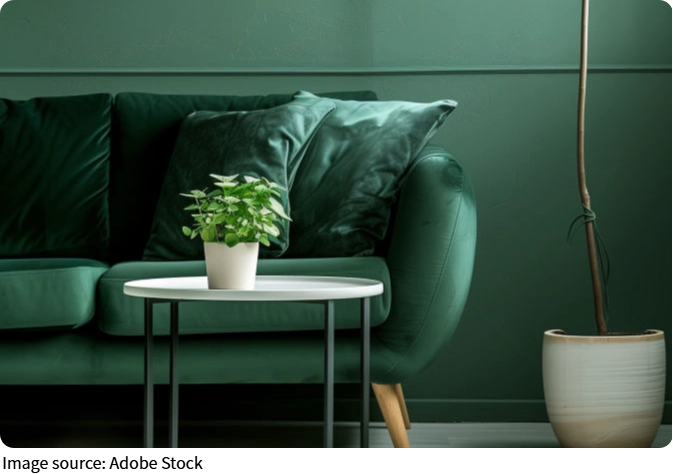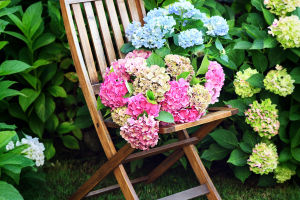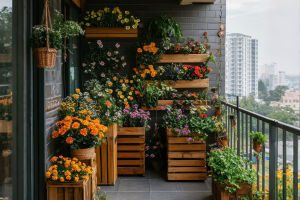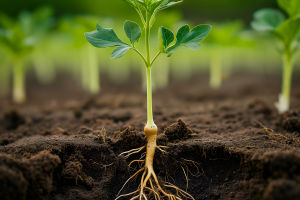New Home Decor

There's something oddly calming about scrolling through a photo of a sunlit living room filled with lush greenery. Maybe it's the trailing pothos cascading from a shelf, or a fiddle leaf fig towering next to a sleek sofa.
If you've ever paused mid-scroll on social media to admire a beautifully styled space with plants front and center—you're not alone.
What used to be an afterthought in home decor is now a social media phenomenon.
Indoor plants aren't just background props anymore—they're the stars. But this isn't just about having greenery in the house. It's about the aesthetic they create, the identity they signal, and the story they tell about how we live today.
Let's take a closer look at how indoor plant aesthetics have made a powerful comeback online—and what it means for your own living space.
1. Plants as Personal Branding Tools
Scroll through social media, and you'll notice a theme: plants often appear in content not just as decor, but as part of a lifestyle.
Influencers, interior designers, and everyday users are using plants to project certain messages:
"I'm calm." "I'm mindful." "I live intentionally."
The social media tags identity has grown beyond hobby—it's now a digital signature of aesthetic awareness and emotional grounding. Whether it's a Monstera in a minimalist room or a jungle-like corner with layered greenery, plants are now used to tell a visual story of who you are.
The more curated your space, the more likely people are to associate you with taste, calmness, and even environmental consciousness.
2. How Social Media Changed the Way We Style Plants
Back in the day, having a few houseplants was just a functional way to liven up a dull room. But now? It's about styling them like you would a piece of art.
Thanks to social media platforms, we've seen plant styling become incredibly creative:
1. Color-coordinated plants and pots: Matching the terracotta pots to the warm wood of furniture, or using matte white planters in Scandinavian-style rooms.
2. Intentional placement: Snake plants in bedroom corners, ZZ plants on work desks, and trailing vines as living curtains.
3. Layering with furniture and textures: Plants are used to soften hard edges, add height, and create contrast with neutral palettes.
This is where algorithmic influence kicks in. The more we see these clean, green, carefully styled images, the more we want to replicate them at home—and share our own versions back into the feed.
3. Trending Plants That Dominate Feeds
It's no accident that certain plants show up again and again online. These varieties offer both aesthetic appeal and camera friendliness.
Here are a few "It plants" of the moment:
1. Monstera deliciosa: Known for its large, split leaves that scream drama and elegance.
2. Fiddle Leaf Fig: Tall, photogenic, and a little fussy—perfect for styling challenges.
3. Pothos: Affordable, fast-growing, and looks stunning in macramé hangers.
4. Calatheas: With intricate patterns, they pop on camera even in dim lighting.
5. String of Pearls: Perfect for hanging shots and boho-inspired setups.
Many creators even share "plant hauls" or "plant shelfie" tours—turning plant ownership into content itself.

4. The Aesthetic Psychology Behind It
So why do plants look so good on camera—and why do we like looking at them?
Research in environmental psychology tells us that greenery promotes feelings of calm, focus, and well-being. In a world that's always rushing, even a virtual jungle can help people feel grounded.
But there's more: the natural asymmetry, softness, and movement of plants counterbalance the clean, often sterile lines of modern furniture. That balance is what makes plant-based interiors feel "right"—even if you can't always explain why.
Interior stylist Sophie Mayers, known for her plant-forward designs, explains:
"Plants add life to a room in a way no object can. They bring color, texture, and rhythm—and make the whole space feel more human."
5. Behind the Scenes: How Content Creators Keep Plants Looking Perfect
While social media makes plant styling look effortless, the truth is: those perfect photos take some work.
Here's what you don't always see:
1. Rotation schedules so all sides get even sunlight (to prevent lopsided growth).
2. Hidden grow lights disguised as pendant lamps or LED strips.
3. Regular misting or wiping to keep leaves dust-free and camera-ready.
4. Strategic editing: Yes, sometimes that lush green look is enhanced with a preset filter.
The point? Don't feel bad if your real plants look less perfect than the ones online. Most of what you see is curated—and the goal is inspiration, not comparison.
Conclusion
As much as we love digital filters, there's something deeply satisfying about having living, breathing beauty in your home. And whether you're posting about it or not, a carefully placed plant can shift the entire energy of your space.
So here's a question for you: If someone walked into your home today, which plant would represent your style?
If you're thinking of adding one—or five—what kind of vibe are you going for? Zen jungle? Scandinavian calm? Vintage greenhouse? Whatever it is, your next houseplant might just be your next best accessory.
-
 Bloom All YearSeasonal Flower Planting Guide: Tips to Keep Your Garden Blooming Through Spring, Summer, Autumn, and Winter.
Bloom All YearSeasonal Flower Planting Guide: Tips to Keep Your Garden Blooming Through Spring, Summer, Autumn, and Winter. -
 Balcony Green MagicPractical Tips for Growing Flowers and Plants on Small Balconies to Create Your Own Green Paradise!
Balcony Green MagicPractical Tips for Growing Flowers and Plants on Small Balconies to Create Your Own Green Paradise! -
 Soil Growth SecretsUnderstanding Soil Needs and Improvement Techniques to Help Your Flowers and Plants Thrive.
Soil Growth SecretsUnderstanding Soil Needs and Improvement Techniques to Help Your Flowers and Plants Thrive.